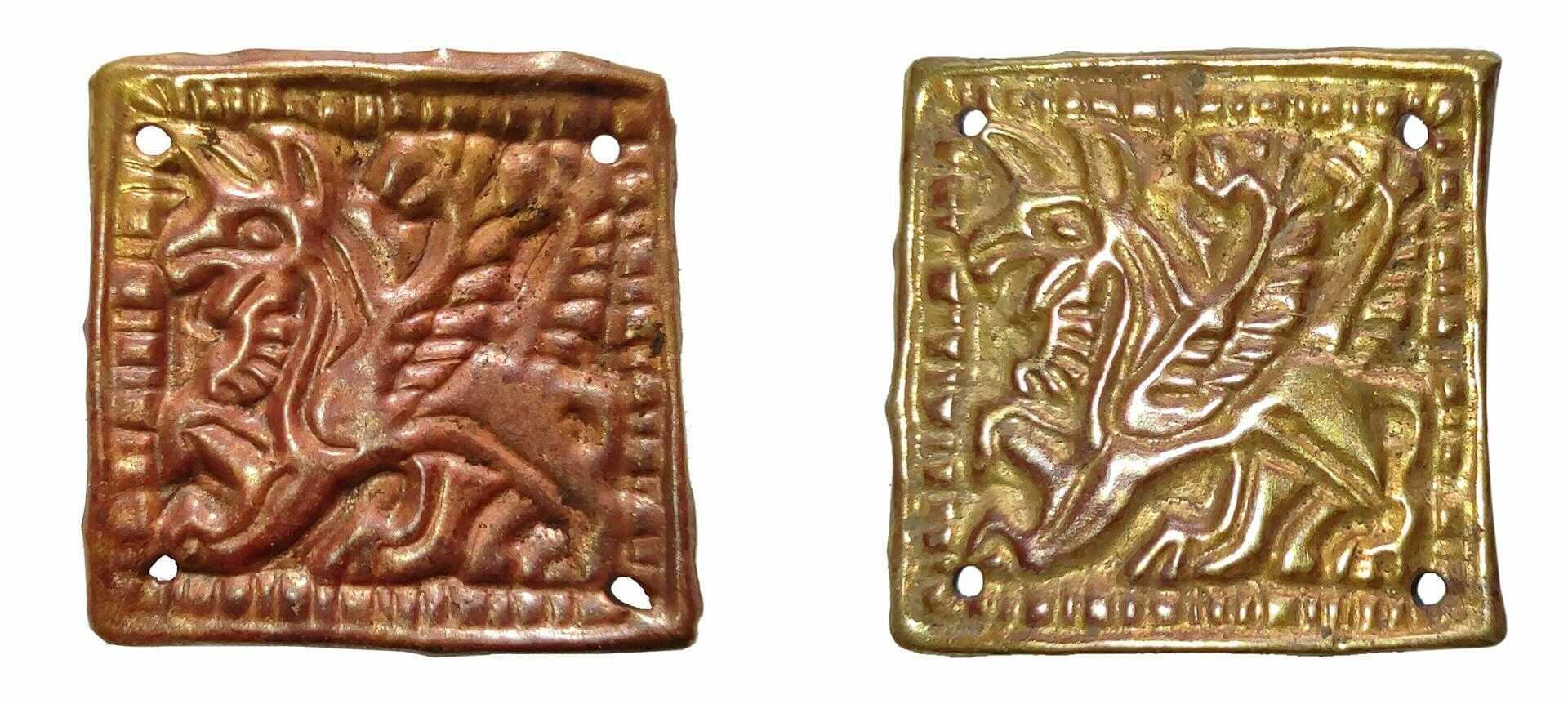Scientists from the Institute of Archeology of the Russian Academy of Sciences examined the crypt of the 4th century BC.
e.
near Simferopol.
According to them, the complex architecture of the complex and the unique artifacts found indicate that the building served as a burial place for the family of a noble Scythian.
This was reported by the press service of the Institute of Archeology of the Russian Academy of Sciences.
In the spring, archaeological excavations of the kurgan group in the foothills of the Crimea were completed.
Previously, the territory fell into the construction zone of the Donskoye -
Perevalnoe.
Under the mound 2.5 m high and 50 m in diameter, archaeologists studied a completely preserved stone crepid (a supporting wall that surrounded the mound in a ring).
It consisted of powerful stone blocks of various sizes, laid around the circumference in one and two rows.
Walking gryphon patches
© Institute of Archeology RAS
In the center of the mound, scientists discovered a crypt dating back to the 4th century BC.
e.
The tomb was covered with logs and boards, on which the ancient builders laid stone slabs.
A long corridor led to the entrance to the chamber of the crypt.
“We have little data on the architecture of the Scythian burial mounds in the foothills of the Crimea of this period, because many famous crypts were completely robbed or were not fully described during research in the 19th century.
Now we know that there are no absolutely identical architectural solutions for Scythian mounds,” said Irina Rukavishnikova, researcher at the Department of Scythian-Sarmatian archeology of the Institute of Archeology of the Russian Academy of Sciences, head of the excavations.
Burial finds: gold earrings and patches
© Institute of Archeology RAS
Inside the crypt, scientists discovered a collective burial, where six people were buried at different times.
Unique artifacts were found near the remains, in particular, two stripes with images of walking griffins, gold earrings, bronze arrowheads and a tip with a flow (an iron fitting on the heel of a shaft in the form of a tip that serves as an emphasis. -
RT
) from an iron spear.
According to archaeologists, the complex architecture of the complex and the objects found indicate that the building served as a burial place for the family of a noble Scythian.
“Clothes in the burial of noble Scythians, as a rule, were decorated with various gold stripes.
Stripes similar to those found in the burial were previously found in the nearest barrows (for example, Tuak-Oba), in the barrows of Southern and Left-Bank Ukraine, and Eastern Crimea.
Since all the stripes in the burial (and this is about 100 individual items) were in their places, in situ, we will be able to reconstruct the costume of at least one of the people buried here,” said Irina Rukavishnikova.
Researchers will continue to study the anthropological collection to determine the age of the buried, the degree of their relationship and the medical condition of the organisms at the time of death.
“The field work has been completed.
In the future, it is planned to make a volumetric reconstruction of the stone crypt, to conduct research on organic samples obtained from the remains of the cape with plaques and from the ceiling of the crypt.
Weapons are being restored.
An accurate description and graphical reconstruction of the burial complex and inlet burials will make it possible to add this elite barrow to the already known barrows of the Scythian era in the foothills of the Crimea,” explained Irina Rukavishnikova.

